Chiral vortices in fluids and spontaneous mirror symmetry breaking
- 1Centro de Astrobiologia (CAB) CSIC-INTA, Carretera Ajalvir Kilometro 4, 28850 Torrejon de Ardoz, Madrid, Spain
- 2Departamento de Ingenierıa Termica y Fluidos, Universidad Carlos III de Madrid, 28911 Leganes, Madrid, Spain
INTRODUCTION
The chemistry of life on Earth is based on a basic asymmetry of certain molecules whose threedimensional geometrical structure or conformation is not identical to that of their mirror image, or spatial reflection through a mirror. Parity P, or space inversion, a discrete spatial symmetry transformation of fundamental physics, is broken at the molecular level. Such molecules are said to possess chirality or handedness. The mirror image structures of a chiral molecule are called enantiomers. Homochirality is ubiquitous in biological chemistry from its very start. Amino acids, the building blocks of proteins, and the sugar backbones present in DNA and RNA, are chiral molecules. The origin of biological homochirality has intrigued the scientific community ever since its initial discovery by Pasteur. To unravel its possible origin, we have conducted a combined theoretical and numerical study on the physics of fluid flows in curved pipes. In such coiled ducts, hydrodynamic flows develop a net chirality which can then be transmitted, via viscous shear forces, to the level of molecular self-assembly. This establishes a purely fluid-mechanical mechanism of mirror symmetry breaking from the fluid flow to the constituent molecules [1].
CHIRAL SYMMETRY BREAKING IN HELICAL FLOWS
Let us consider a set of curved pipes with circular section of radius r and radius of curvature R. In order to avoid dimensional bias, dimensionless quantities are considered for the definition of the flow regime: curvature=r/R, pitch=h/R, Re=rρU/μ (Reynolds number) and De=Re√(r/R) (Dean number), where ρ is the density of the fluid, μ the dynamic viscosity, U the flow velocity in the pipe’s centerline direction and h the length of the helical pitch. In the case of toroidal pipes (pitch=0), the cross-sectional secondary flow consists of two symmetric recirculating regions.
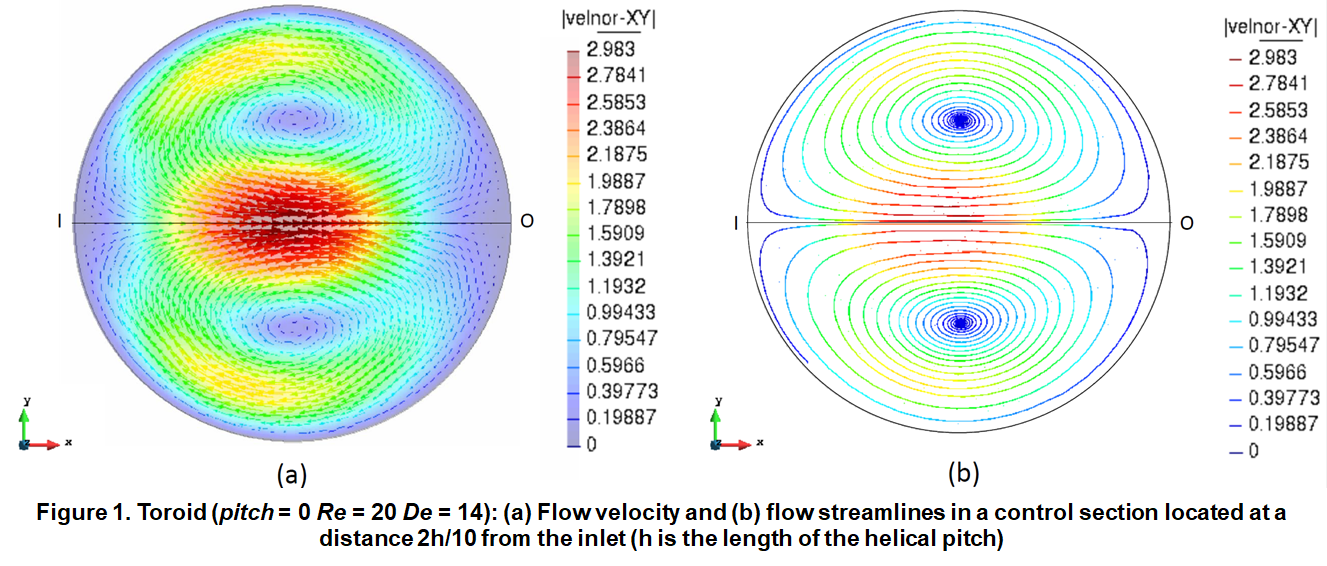
However, when the pipe is subjected to a pitch, i.e. in the case of helical pipes, an asymmetric vortex pair structure is generated. This hydrodynamic shear flow asymmetry might then induce chiral symmetry breaking at the molecular level (top-down chirality transfer).
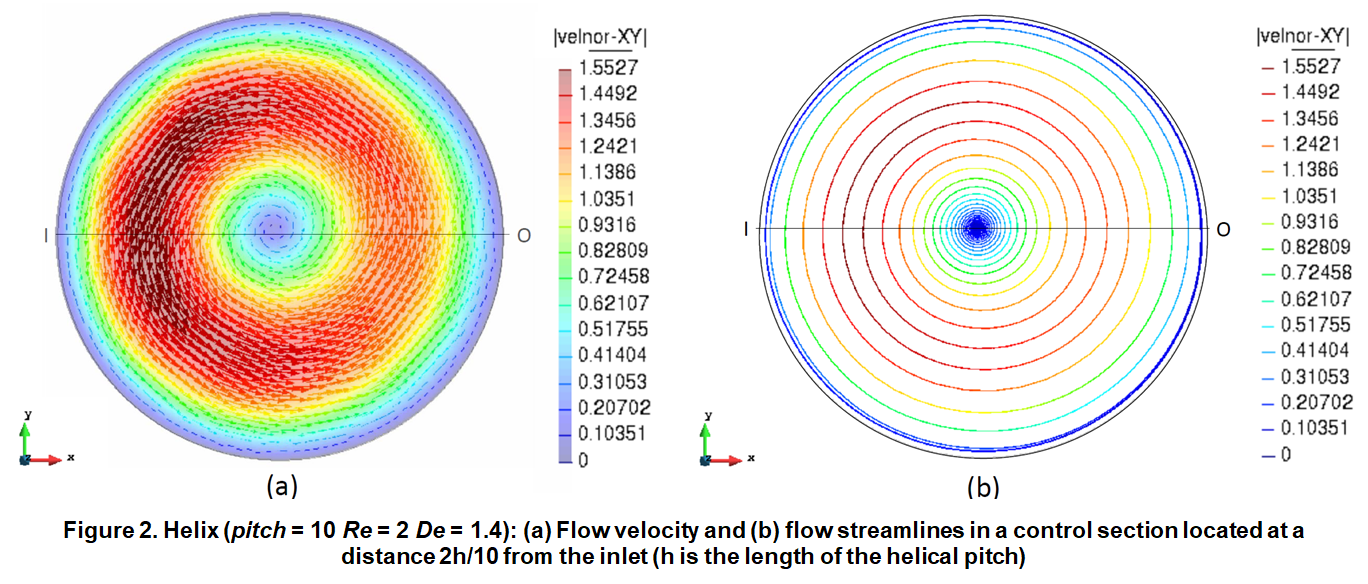
To quantify the symmetry breaking of the cross-sectional vortex pair in helical pipes, a set of numerical tests is carried out [2]. The input consists of the physical flow conditions: Reynolds number, Re, which accounts for the main flow velocity and fluid properties (density and viscosity) along with the geometric properties (curvature, r/R, and pitch, h/R).
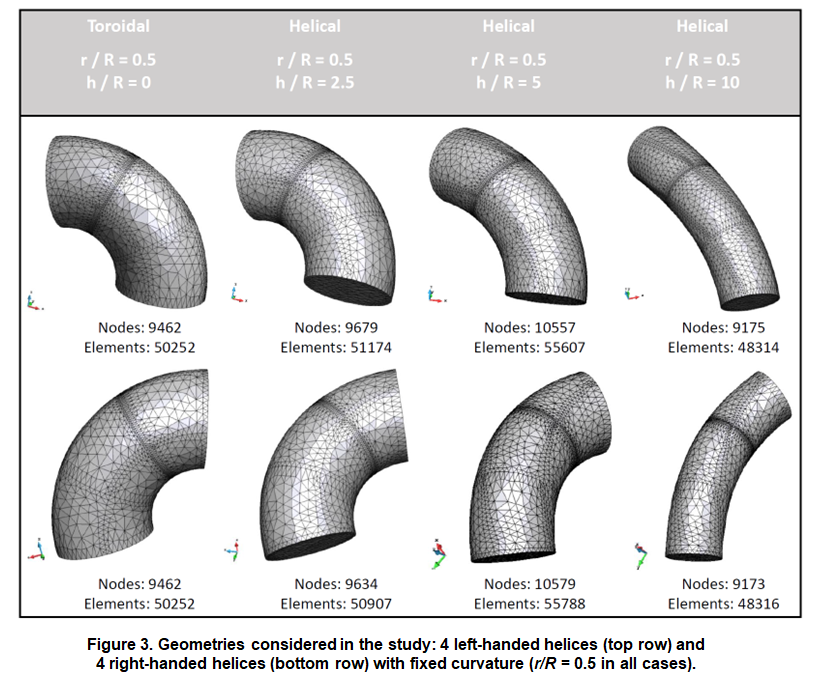
When the pipe is subjected to a pitch, i.e. in the case of helical pipes, an asymmetric vortex pair structure is generated. This hydrodynamic shear flow asymmetry might then induce chiral symmetry breaking at the molecular level (top-down chirality transfer).
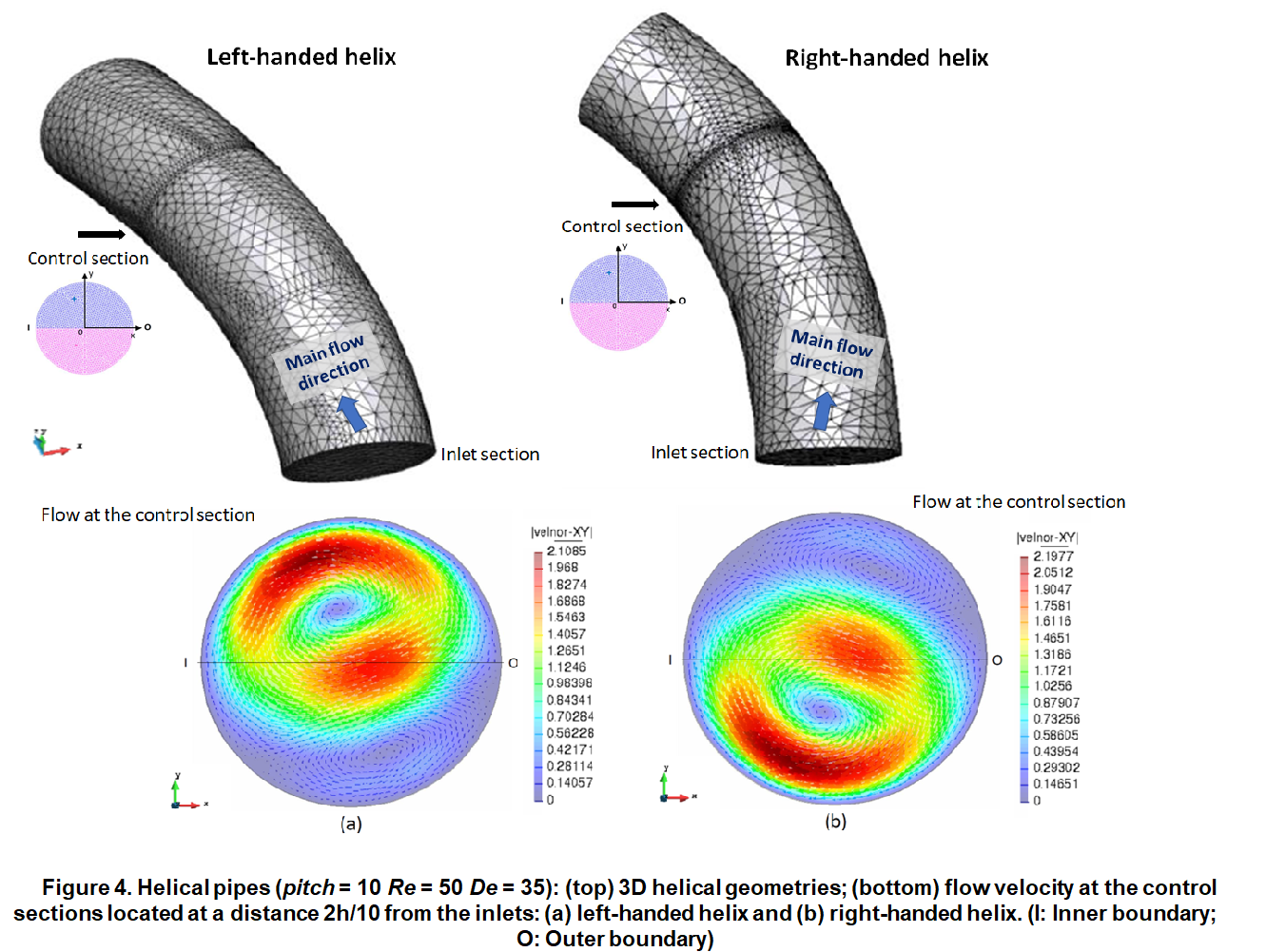
MODEL RESULTS
The model presented allows the quantification of the chiral symmetry breaking in a helical flow reactor by means of the chiral parameter, χ = χ(De, pitch), given by the following mathematical expression:
where a and b are functions of the dimensionless helical pitch=h/R:
These results are extremely useful to determine the geometric characteristics and operating conditions for the design of an experimental helical flow reactor, in order to control the net chirality of the outflow, leading to numerous important applications in both basic and applied science [4,5], and in origin-of-life scenarios under the influence of fluid flow [6].
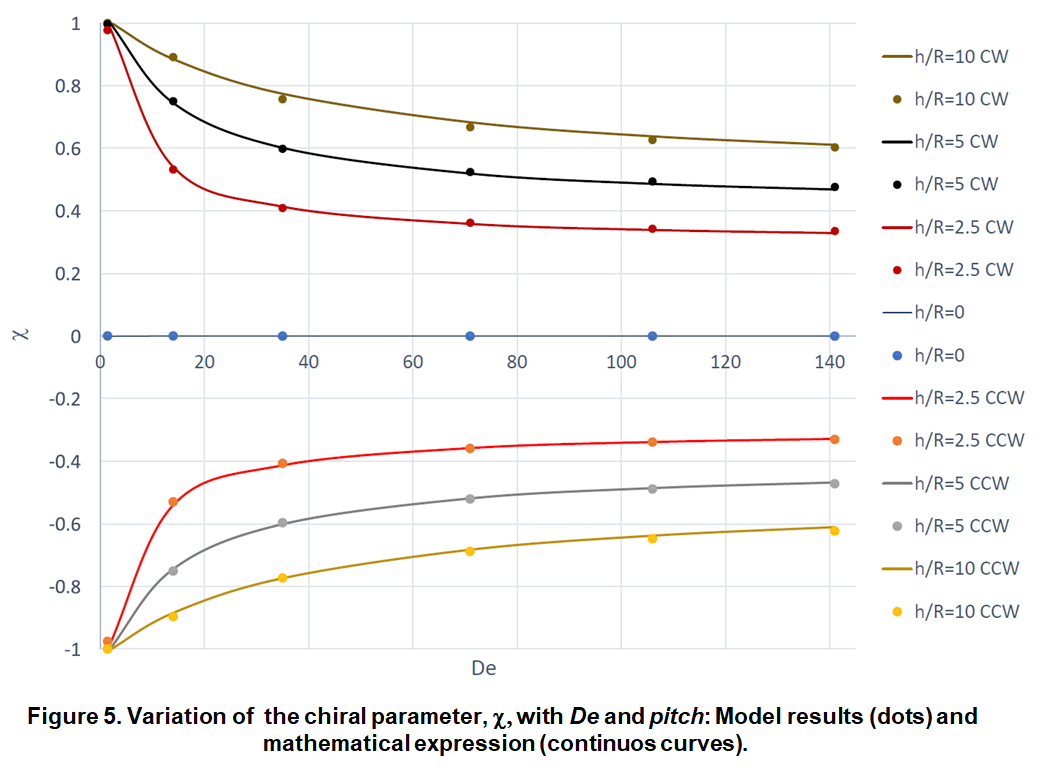
REFERENCES
[1] Ribó et al., Science, 292 (5524): 2063-2066 (2001)
[2] Herreros and Hochberg, Physics of Fluids, 35: 043614 (2023)
[3] Herreros and Ligüérzana, Physics of Fluids, 32: 123311 (2020)
[4] Sevim et al., Nat. Commun., 13: 1766 (2022)
[5] Sun et al., Nat. Commun., 9: 2599 (2018)
[6] Brandenburg and Hochberg, Orig. Life Evol. Biosph. 52: 1–2 (2022)
ACKNOWLEDGEMENTS
This research has been funded by grant No. PID2020-116846GB-C22 by the Spanish Ministry of Science and Innovation/State Agency of Research MCIN/AEI/10.13039/501100011033 and by “ERDF A way of making Europe”. Thanks to Josep M. Ribó for many insightful discussions. I.H. would like to express her gratitude for the years of scientific collaboration with the late David Hochberg, who is deeply mourned by family, friends, and colleagues.
How to cite: Herreros, I. and Hochberg, D.: Chiral vortices in fluids and spontaneous mirror symmetry breaking, Europlanet Science Congress 2024, Berlin, Germany, 8–13 Sep 2024, EPSC2024-205, https://doi.org/10.5194/epsc2024-205, 2024.